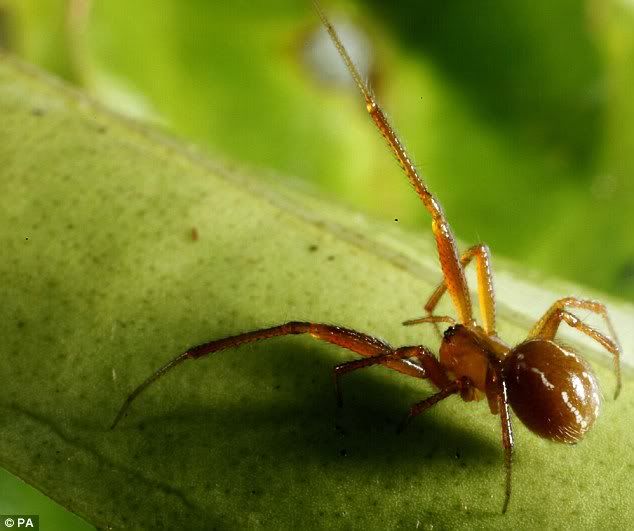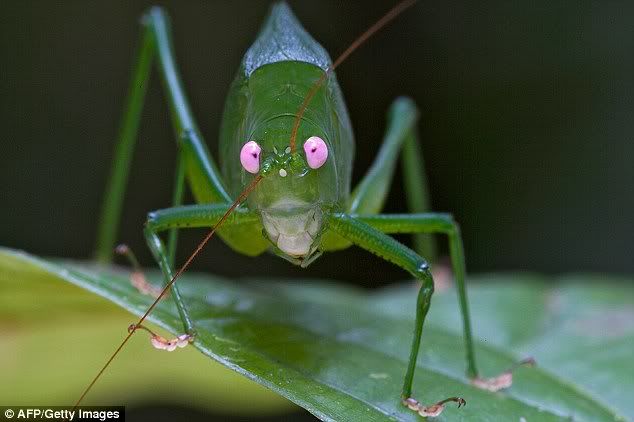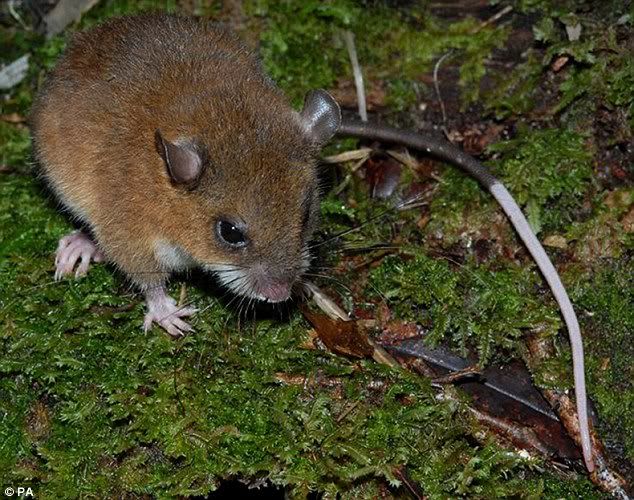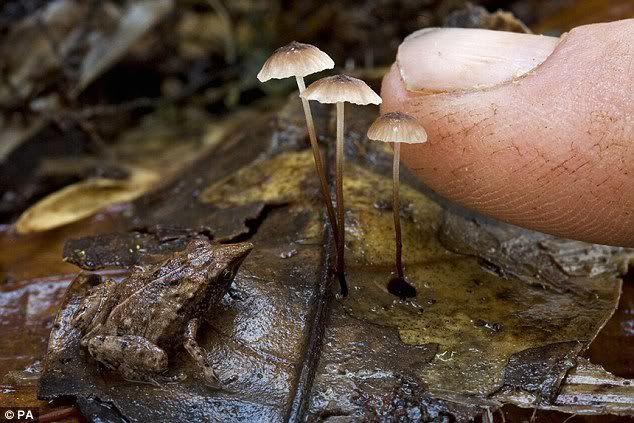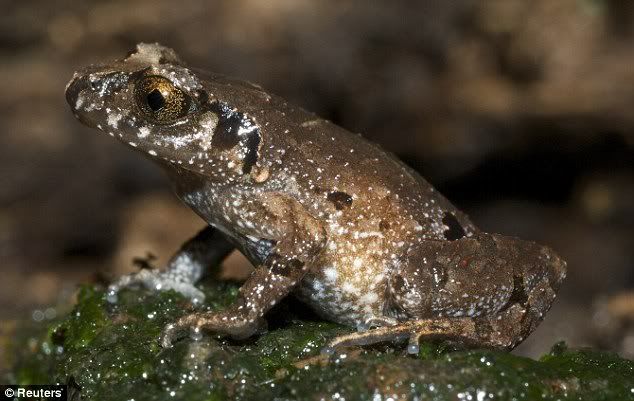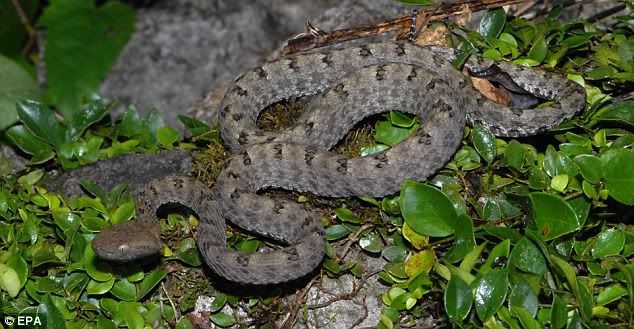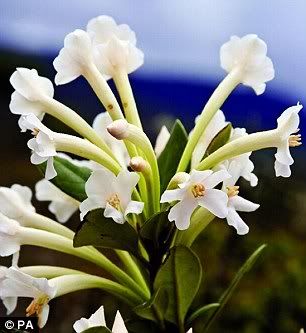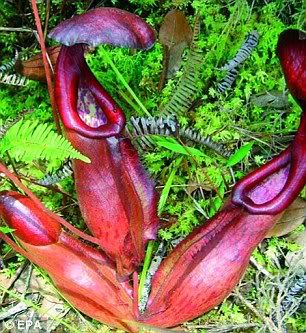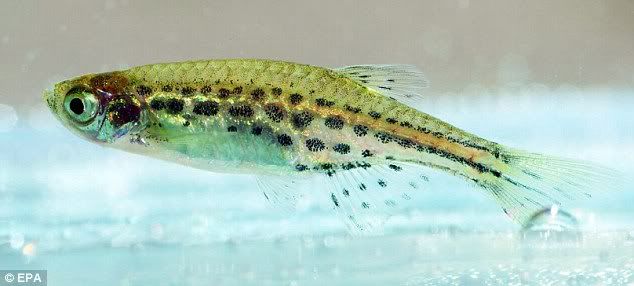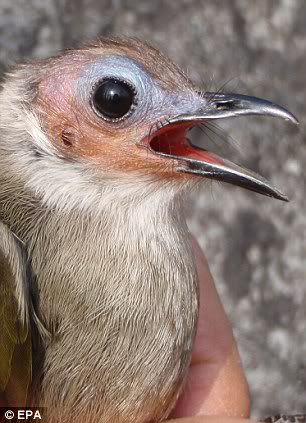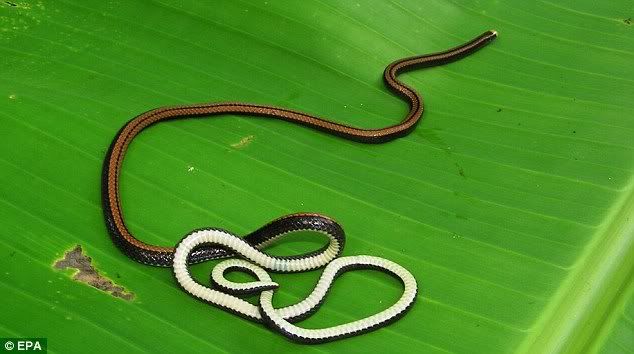The bat, along with an orange spider and a yellow-spotted frog are among a host of new species found in a region of Papua New Guinea.
More than 200 animals and plants were revealed for the first time after two months of surveying in the rugged and little-explored Nakanai and Muller mountain ranges last year.
The findings included two mammals, 24 species of frog, nine plants, nearly 100 new insects including damselflies, crickets and ants, and around 100 spiders.
A white tipped-tail mouse, at least one ant and several of the crickets, or katydids, are so different from other known species they each represent an entirely new genus, the scientists said.
They were uncovered by two scientific teams co-ordinated by Conservation International's rapid assessment programme, in partnership with Papua New Guinea's Institute for Biological Research and conservation organisation A Rocha International.
The teams explored different altitudes of the forest-cloaked Nakanai mountains, which host cave systems and some of the world's largest underground rivers, and the Muller range, accessing the remote areas by plane, dinghy, on foot and even by helicopter.
In the Nakanai surveys, scientists discovered a beautiful yellow-spotted frog found only high up in the mountains, the mouse with the white-tipped tail and the tiny 2cm frog which calls for a mate in the afternoon - unlike most frogs in the area which call at night.
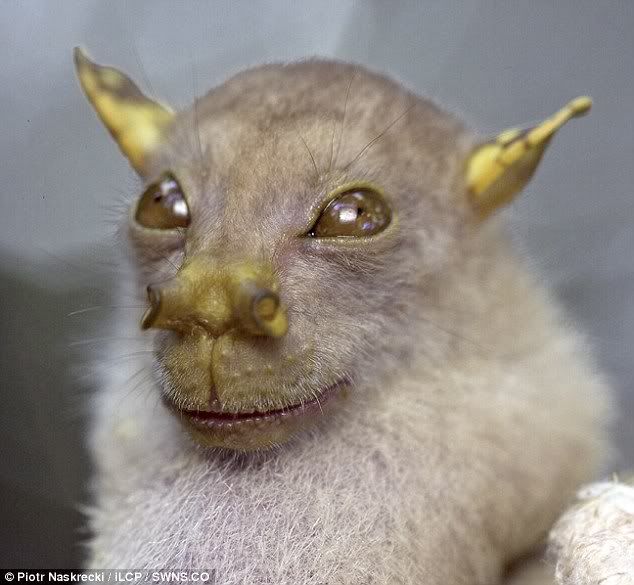

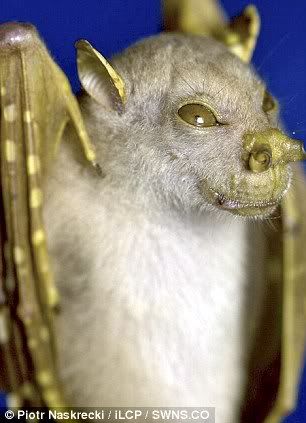
In the Muller range, researchers found what they described as a 'spectacular variety' of insects, spiders and frogs.
One of the newly-discovered katydids has exceptionally long, spiny hind legs which it uses to jab at anything that threatens it, one new species has pink eyes and another has emerald-green patterning.
Leeanne Alonso, Conservation International's rapid assessment programme director said the discoveries made in both surveys were incredibly significant.
While very encouraging, these discoveries do not mean that our global biodiversity is out of the woods,' she said.
'On the contrary, they should serve as a cautionary message about how much we still don't know about Earth's still hidden secrets and important natural resources, which we can only preserve with co-ordinated, long-term management.'
Dr Martin Kaonga, interim director of science and conservation at A Rocha International, said: 'It's very important we find these species, because it's only when you know what species exist in an area that you may be in a position to understand how to manage that given area.'
He also said species may have uses, for example as medicines, and that there was a need to raise understanding among local people of the value of the wildlife found in their forests.
Meanwhile, several new discoveries in South-East Asia’s Mekong river are also causing a stir.
A fish with curving vampire fangs, a gecko that looks as if it's wearing lipstick and a carnivorous plant more than 7m high may sound like creatures from a nightmare but they are real.
They are just three of 145 new species found in the area in 2009 and highlighted in a WWF International report issued today, ahead of the UN Convention on Biological Diversity in Nagoya, Japan, this month.
The diversity of the region, so rich that an average of three new species were discovered each week last year, also highlights the need for action to ensure these new finds survive, WWF International said.
Among the animals highlighted in New Blood: Greater Mekong New Species Discoveries 2009’ is the Dracula minnow, with bulging eyes and two sharp fangs curving from its low-slung jaw. Luckily, the fish only grows to a maximum of 16.7 mm.
More attractive by far is the lipstick gecko, barely big enough to perch on a finger, with a dark barred pattern across its lips suggestive of cosmetics.
Other featured creatures include a fangless snake, a frog that chirps like a cricket, and a pitcher plant that traps insects and grows to a height of over seven metres.
‘This rate of discovery is simply staggering in modern times," said Stuart Chapman, Conservation Director of WWF Greater Mekong, in a statement.
‘Each year, the new species count keeps going up, and with it, so too does the responsibility to ensure this region's unique biodiversity is conserved.’
